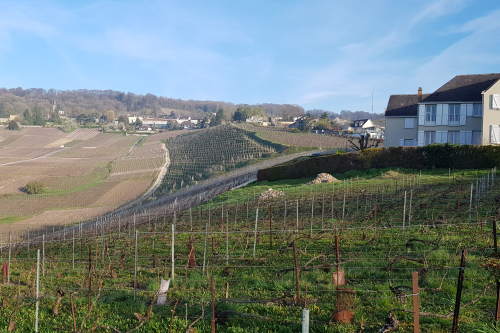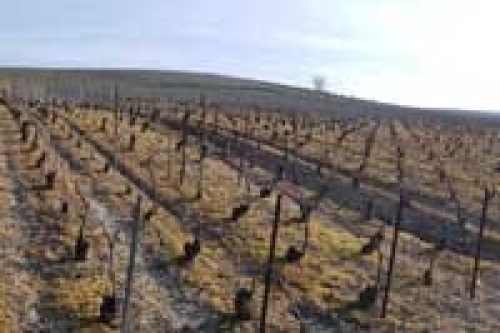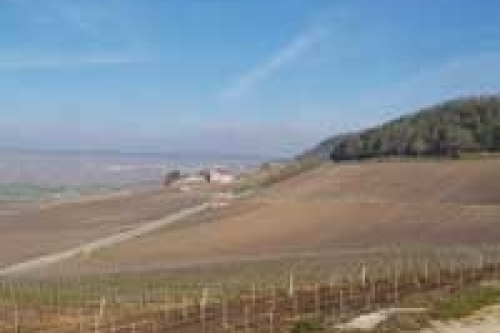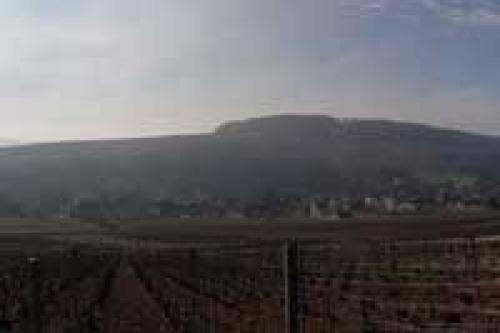Key facts
Located in subregion / area: Vallée de la Marne / Grande Vallée de la Marne
Classification: Premier cru (93%)
Vineyards and grape varieties: 284.1 hectares, of which 45% Pinot Noir, 33% Pinot Meunier, and 22% Chardonnay.
Noted for: Pinot Noir and Pinot Meunier from south-facing slopes, the Benedictine abbey Saint-Pierre d’Hautvillers where the monk Dom Pierre Pérignon worked as winemaker.
Hautvillers is most known for its abbey, where the monk Dom Pierre Pérignon was active, and many visitors to the region pass through here. The village calls itself le Berceau du Champagne, “the cradle of Champagnes”.
The Hautvillers commune covers 1177 hectares and counts 768 inhabitants (as of 2011) called Altavillois and Altavilloises respectively. This is derived form the old Latin name of the village, Alta Villare. The Saint-Pierre d’Hautvillers Abbey is located at the southwestern edge of the village. It was founded in the year 650 by Saint Nivard, archbishop of Reims. The abbey had a relic of Saint Helena, nicked in Rom in the year 841 by a priest from Reims. This meant visits by pilgrims and income that made the abbey able to buy vineyard land. The abbey buildings have been destroyed and rebuilt several times throughout the history of its existence.
Similar to other abbeys and other church property in France, the French Revolution of 1789 meant an end to its activities, and the property was confiscated by the state. The (former) abbey buildings are today owned by Moët & Chandon. Vineyards consists of predominantly south-facing slopes, mostly with mixed Pinots.
The current vineyard surface in the commune is 284.1 ha (702.0 acres). There are 127.5 ha Pinot Noir (44.9%), 93.3 ha Pinot Meunier (32.8%), 62.9 ha Chardonnay (22.2%). Numbers from CIVC, as of 2013. In 1997, the vineyard surface was 280 ha. There are 140 vineyard owners (exploitants) in the commune.
Champagne houses that use vineyards in this village include Moët & Chandon, Roederer, and Taittinger.
Earlier, at least until the early 1990s vintages, the small brochure that accompanies gift boxes of Dom Pérignon, specified from which villages the grapes to the cuvée came. It used to be mostly a number of grand cru villages and Hautvillers, to provide a connection to the place where Dom Pérignon himself was active.
Source: winetomas




